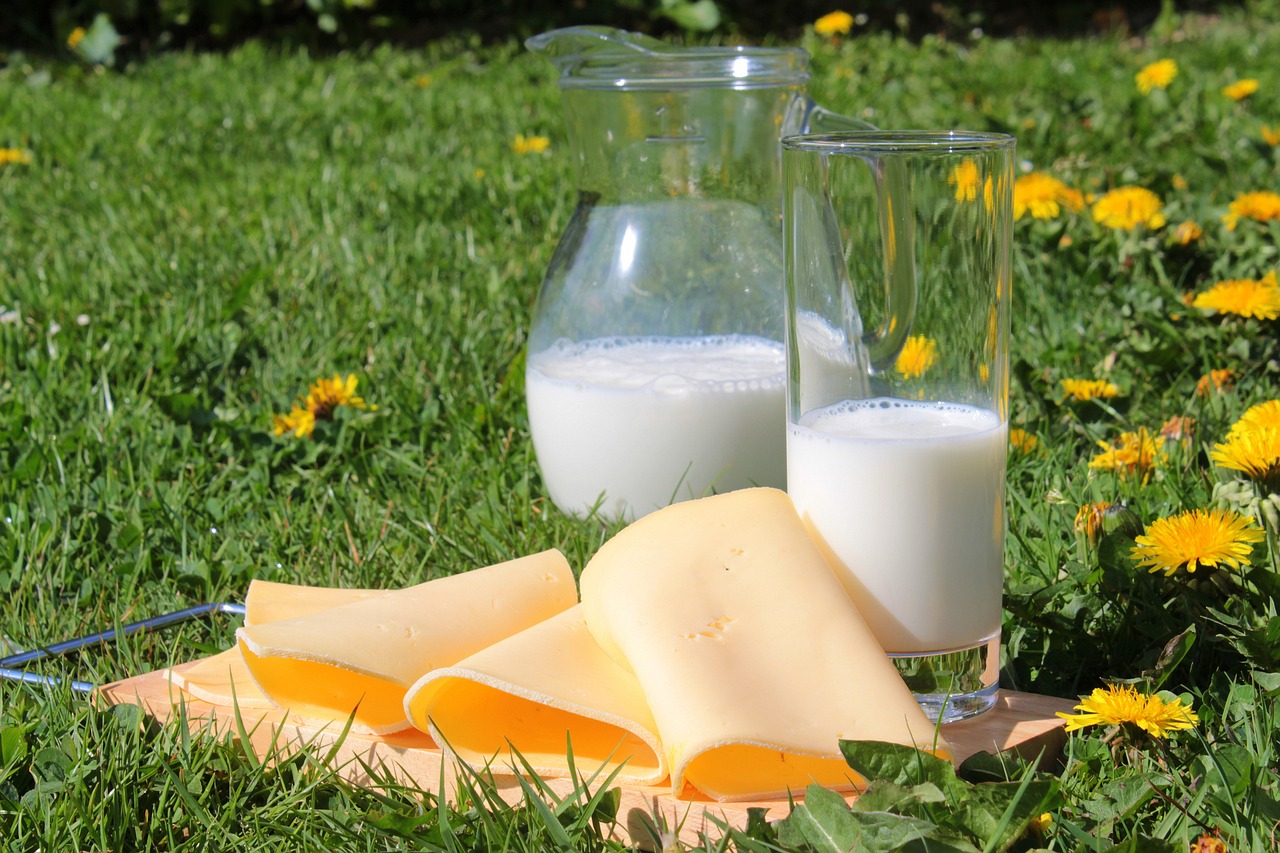You have probably heard that you should cut meat and dairy from your diet to reduce your carbon footprint. It is more obvious to identify what meat is in our diet and find ways to cut it out. But what do we mean by ‘dairy’ and what food and drinks is it in?
What is meant by ‘dairy’ and why is it bad for the environment?
Dairy products contain milk from mammals, such as cows, goats and sheep. Dairy creates carbon emissions because the milk we drink is mainly from cows. Cows are the main driver of deforestation in the world. Trees store carbon, so when they are cut down, they release carbon dioxide into atmosphere. Deforestation contributes 12-20% of global greenhouse gas emissions. Also because of the way cows digest food, they create methane. This is another gas which contributes to global warming.
You do not need to cut out dairy completely, and some dairy is good for you as it contains calcium. But we consume more dairy products than we need to and to halve your carbon emissions by 2030. Ideally you would need to reduce your intake of dairy and you should consider adopting some of the options below. I use ‘plant-based’ and ‘vegan’ interchangeably because they both avoid using mammal’s milk. Any product with one of these labels is good for avoiding dairy.
Ways to reduce dairy in your diet:
Try plant-based/vegan cheese, cream, butter and yoghurt
If you are a big cheese lover like me, it is hard to believe vegan alternatives will ever be as good. I was reluctant to try it at first, however, the taste of vegan cheese has been getting better and better over the years, and I cannot tell the difference between some real and vegan cheeses, such as feta. Other products that have high amounts of milk that you probably use daily is butter and yoghurt. It is worth experimenting with various brands which one you like.
Eat dark chocolate instead milk chocolate
Dark chocolate is made up of only coco beans and sugar, whilst milk chocolate typically contains less cocoa beans and more sugar and milk. Since dark chocolate does not include any milk, it has a third less carbon emissions. If you still prefer milk chocolate to dark chocolate, another way of reducing your carbon emissions is to seek out milk chocolate that contains plant-based milk. These alternatives are becoming more available on the market.
Buy vegan ice cream, sorbet or ice lollies
Many popular ice-cream brands, such as Magnum and Ben and Jerry’s, produce non-dairy versions of their popular products, which taste the same as the dairy version. Other ways of enjoying cold desserts are buying sorbets and ice lollies. They have an added bonus of typically having lower in calories as well.
Put plant-based milk in your tea/coffee/hot chocolate/milkshakes
When ordering a milky drink from a café, ask if they can substitute cow’s milk for soya milk or oat milk. This can halve the amount of carbon emissions of your milky drink.
Eat cornflakes and porridge with plant-based milk
A typical bowl of cornflakes or porridge uses 180ml of milk. Switching over to any plant-based milk instead of cow’s milk would halve the carbon emissions of a bowl of porridge.
Avoid adding cream or custard to desserts
Unless you are going to use a plant-based cream or custard, you should avoid putting cream, whether it is single, double or whipped, on desserts. Adding cream to a dessert can double the amount of carbon emissions of the dessert. From my experience, the taste of plant-based cream and custard is identical to the dairy version of the product. So, if you really want to add it to your dessert, use the plant-based version to reduce your carbon footprint.

Leave a Reply